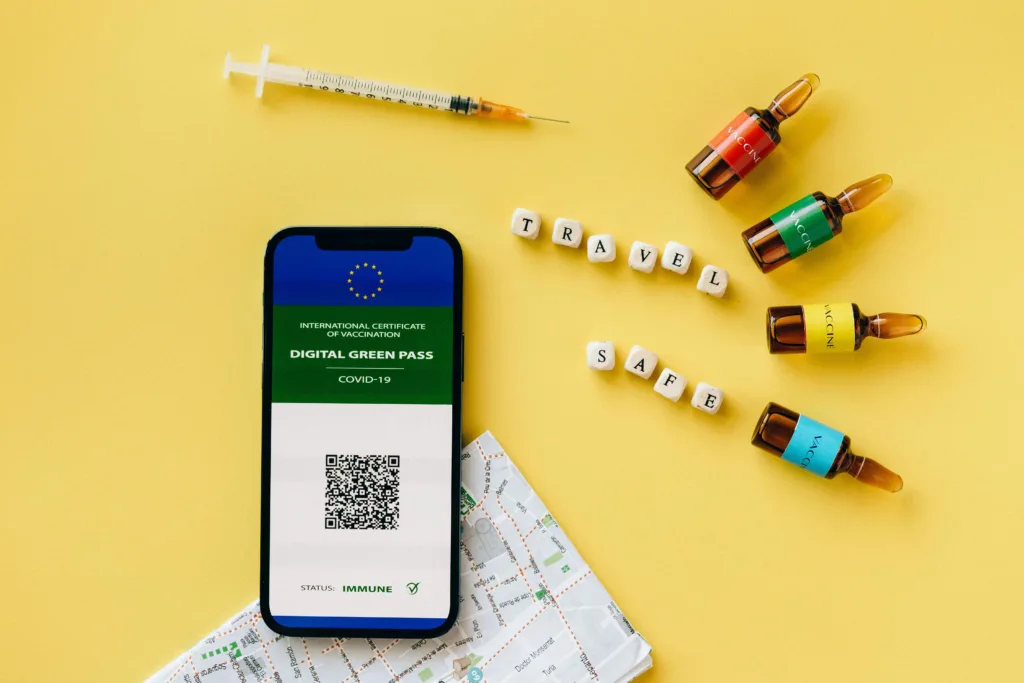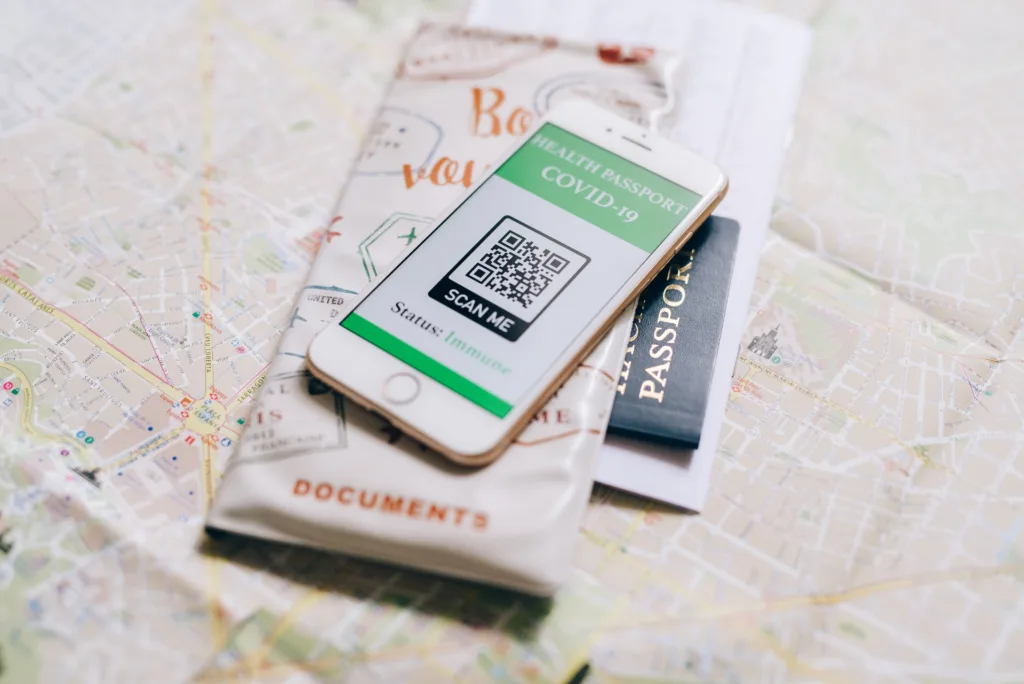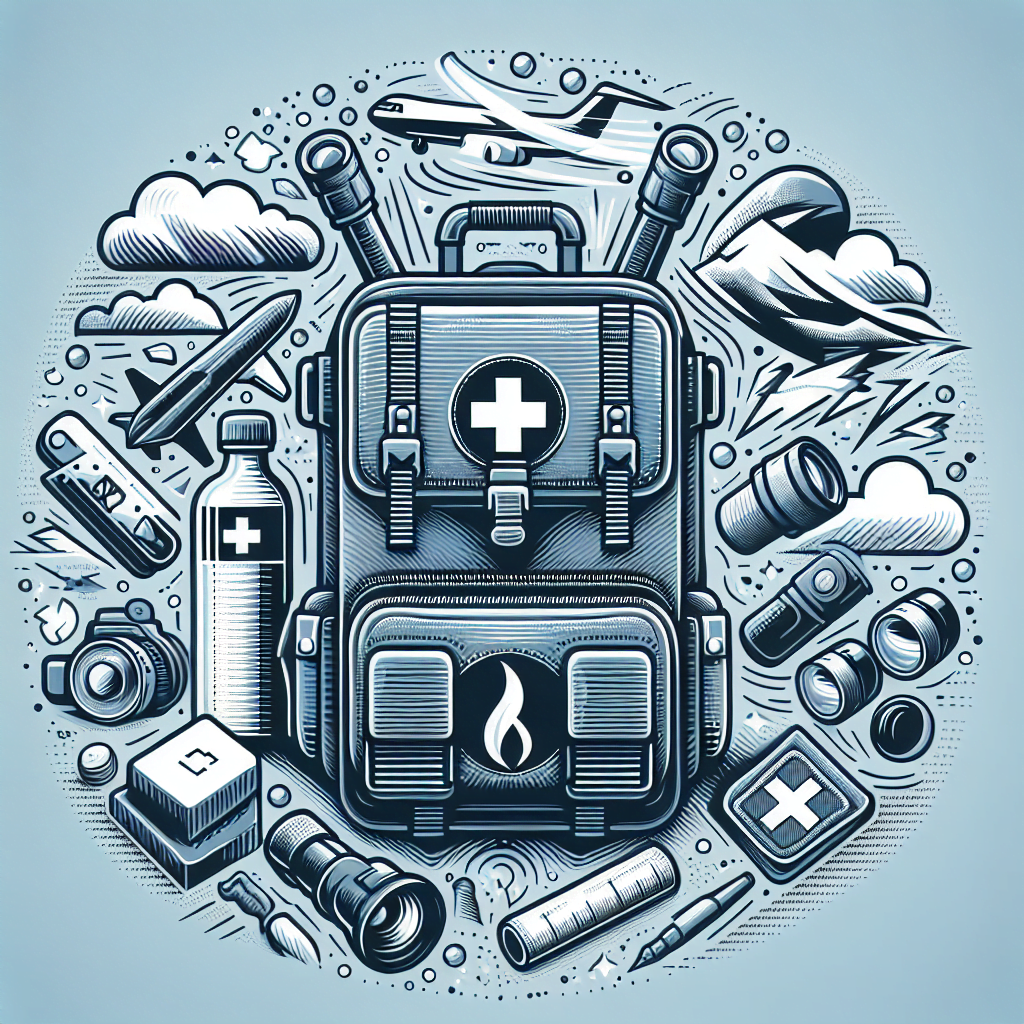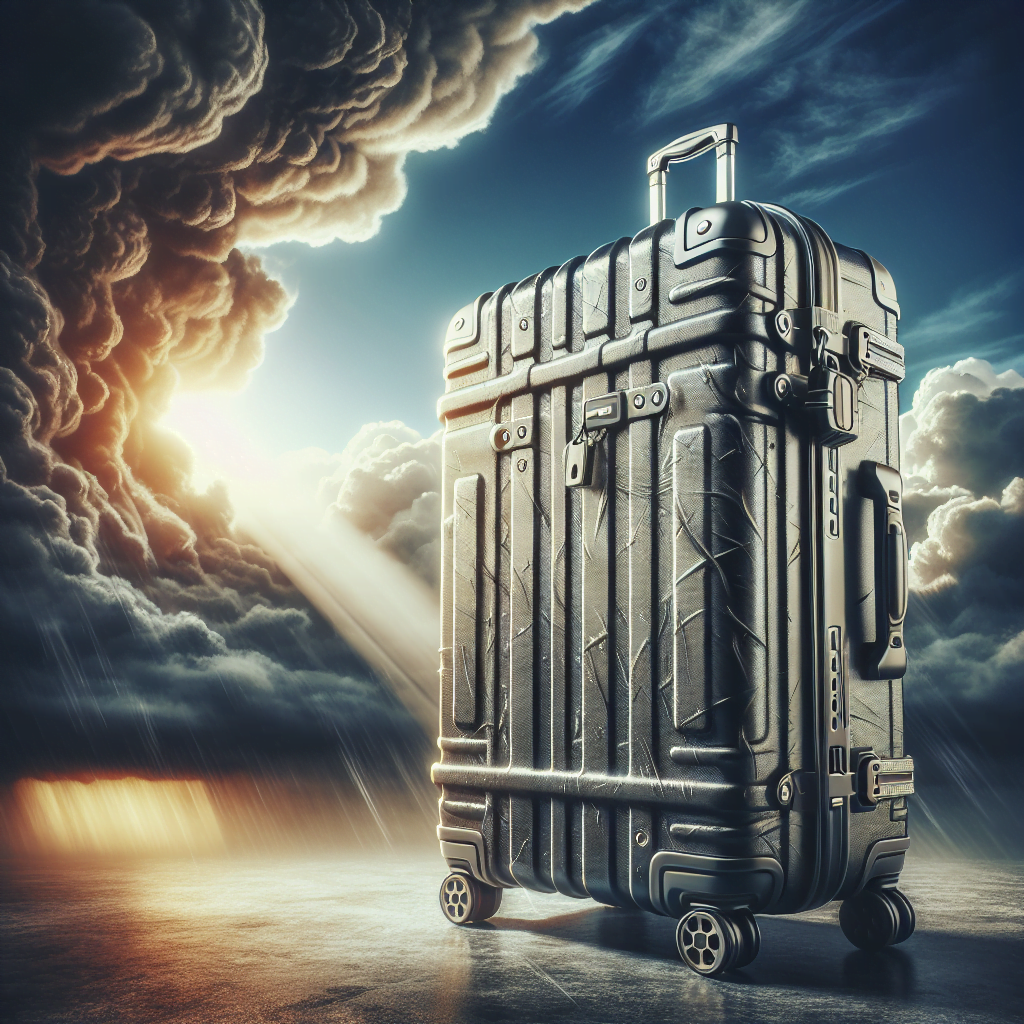Traveling can be an exciting and enriching experience, but it’s important to stay prepared and safe, especially when it comes to natural disasters. From hurricanes and earthquakes to floods and wildfires, the world is full of unpredictable events that can disrupt your journey. In this article, we will provide you with practical tips and essential advice on how to stay safe during natural disasters when you’re on the road. Whether you’re a seasoned globetrotter or a first-time traveler, our aim is to ensure that you are well-informed and equipped to handle any unexpected situation that may arise during your adventures. So, buckle up and let’s dive into the world of disaster preparedness!

Table of Contents
Researching Potential Natural Disasters
When traveling to a new destination, it is important to research potential natural disasters that may occur in the area. By being prepared and knowledgeable about the risks, you can better protect yourself and make informed decisions during your trip. One of the first steps is to check local weather reports.
Checking Local Weather Reports
Before embarking on your trip, it is crucial to check the local weather reports for your destination. This will help you stay updated on any possible weather-related risks, such as hurricanes, severe storms, or extreme temperatures. Pay attention to any warnings or advisories issued by the local authorities or meteorological organizations. Being aware of the weather conditions can help you plan your activities accordingly and avoid any dangerous situations.
Researching Common Natural Disasters
In addition to checking local weather reports, it is essential to research common natural disasters that occur in the area you will be visiting. Every region has its own unique set of risks, including earthquakes, floods, wildfires, or tropical cyclones. By understanding the frequency and severity of these events, you can take necessary precautions and make informed decisions about your travel plans.
Understanding Regional Climate Patterns
Another aspect to consider when researching potential natural disasters is understanding the regional climate patterns of your destination. Some regions are more prone to certain types of disasters due to their geographical location or weather patterns. For example, coastal areas may be at a higher risk of hurricanes or tsunamis. By familiarizing yourself with the climate patterns of the region, you can anticipate potential risks and take appropriate measures to stay safe.
Preparing for Natural Disasters in Advance
While it is essential to be informed about potential risks, it is equally important to take proactive steps to prepare in advance. Creating an emergency kit, packing important documents, and knowing emergency exits and evacuation routes are crucial aspects of being prepared for natural disasters.
Creating an Emergency Kit
One of the first steps in disaster preparedness is creating an emergency kit. This kit should include essential items such as non-perishable food, water, medications, a first aid kit, a flashlight, batteries, a portable phone charger, a radio, extra clothing, and any necessary personal hygiene items. Keep your emergency kit easily accessible, preferably in a waterproof and durable container. Having these supplies readily available can make a significant difference in your ability to cope during and after a natural disaster.
Packing Important Documents
Another important aspect of disaster preparedness is ensuring that you have copies of your important documents. Make sure to pack copies of your passport, identification cards, travel insurance documents, and any other important paperwork. Store these copies in a waterproof and secure location, either physically or store them on a password-protected digital device. If your originals are lost or damaged during a natural disaster, having copies can help with identification, insurance claims, and other necessary procedures.
Knowing Emergency Exits and Evacuation Routes
When traveling to a new destination, take the time to familiarize yourself with emergency exits and evacuation routes. Whether you are staying in a hotel or a rental accommodation, make a mental note of the nearest exits and the quickest way to reach them. In the event of a natural disaster, these routes can be vital in ensuring your safety. Also, pay attention to any evacuation plans or instructions provided by the local authorities and follow them promptly. Your safety should always be a priority.
Choosing Safe Accommodations
The choice of accommodations can greatly impact your safety during a natural disaster. By researching hotel safety measures, selecting buildings with reinforced structures, and avoiding areas prone to flooding or landslides, you can significantly reduce the risks you may face.
Researching Hotel Safety Measures
When booking accommodations, take the time to research the safety measures implemented by the hotels or guesthouses you are considering. Look for establishments that have emergency plans in place, including evacuation procedures and access to emergency supplies. It is also advisable to check if the hotel has backup power generators, as electricity outages are common during natural disasters. Reviews from other travelers can provide valuable insights into the safety standards and responsiveness of accommodations.
Selecting Buildings with Reinforced Structures
When choosing accommodations, opt for buildings with reinforced structures whenever possible. These structures are designed to withstand natural disasters such as earthquakes or strong winds. Look for hotels or guesthouses that have been built according to local building codes and standards. Stay away from establishments that have a history of structural issues or lack proper maintenance. Your safety should always come first, and selecting a building with a strong foundation can significantly reduce the risks.
Avoiding Areas Prone to Flooding or Landslides
Another important factor to consider when choosing accommodations is avoiding areas that are prone to flooding or landslides. Research the geographical features of your destination and stay away from low-lying areas, riverbanks, or steep slopes. These areas are more susceptible to natural disasters and can put your safety at risk. Instead, opt for accommodations located in elevated or safer zones. Check maps or reach out to local authorities for guidance on areas to avoid.
Staying Informed and Alert
Staying informed and alert is crucial during natural disasters when traveling. By signing up for local emergency alerts, keeping an eye on news updates, and following social media accounts of local authorities, you can receive real-time information and make well-informed decisions.
Signing Up for Local Emergency Alerts
Before traveling to a new destination, sign up for local emergency alerts provided by the respective authorities. This can be done through official websites, mobile applications, or by contacting the local emergency management agency. By receiving timely alerts, you will be informed about any potential natural disasters, evacuation notices, or other critical information specific to your location. This proactive approach will ensure that you have the most up-to-date information during a crisis.
Keeping an Eye on News Updates
While local emergency alerts are crucial, it is also important to keep an eye on news updates from reliable sources. Local news channels, radio stations, or official government websites can provide additional information and updates on natural disasters. Stay informed about the current situation, any evacuation orders, road closures, or other relevant updates that may impact your safety. Being aware of the latest developments will help you make informed decisions and take appropriate actions.
Following Social Media Accounts of Local Authorities
In today’s digital age, social media platforms have become valuable sources of information during emergencies. Follow the social media accounts of local authorities, emergency management agencies, and meteorological organizations in your destination. These accounts often provide real-time updates, safety guidelines, and useful tips during natural disasters. By actively monitoring these platforms, you can stay informed about the evolving situation and receive important instructions directly from reliable sources.

Understanding the Local Evacuation Procedures
In the event of a natural disaster, it is crucial to understand the local evacuation procedures. By identifying evacuation meeting points, knowing transportation options, and understanding the importance of timely evacuation, you can ensure your safety and that of others.
Identifying Evacuation Meeting Points
When staying in a new location, take the time to identify the designated evacuation meeting points. These are predetermined safe areas where people gather during emergencies. Familiarize yourself with the nearest meeting points and plan your route accordingly. In case of an evacuation order, head to these locations and follow the instructions of the local authorities. Remember to stay calm and assist others when necessary.
Knowing Transportation Options
During a natural disaster, transportation options may be limited or disrupted. Therefore, it is important to be aware of the available means of transportation for evacuation purposes. Research local transportation services, including buses, trains, or boats, and understand their evacuation plans and schedules. Additionally, familiarize yourself with any emergency transportation arrangements made by the local authorities. Having this knowledge in advance can save valuable time and help you make the necessary arrangements to evacuate safely.
Understanding the Importance of Timely Evacuation
Timely evacuation can be critical during natural disasters. Local authorities and emergency management agencies issue evacuation orders to protect the lives of residents and visitors. It is essential to understand the importance of adhering to these orders and evacuating promptly. Delaying evacuation can put your life at risk and place additional strain on emergency response services. Stay updated on the evolving situation, trust the advice of local authorities, and prioritize your safety and well-being.
Securing and Protecting Personal Belongings
Natural disasters can be chaotic and lead to the loss or damage of personal belongings. By taking proactive measures such as backing up important data, keeping valuables in a safe place, and using secure locks and padlocks, you can minimize the potential loss during these events.
Backing Up Important Data
One of the most crucial steps in securing personal belongings is ensuring that important data is backed up. Before your trip, make sure to save copies of important files, documents, and photographs on cloud storages or external hard drives. This way, in case of damage to your electronic devices or loss of physical copies, you can retrieve your data easily. Regularly updating your backups will provide added security and peace of mind.
Keeping Valuables in a Safe Place
When traveling, it is advisable to keep valuables such as money, jewelry, passports, and electronics in a safe place. Most accommodations provide safety deposit boxes or in-room safes for guests to use. Take advantage of these facilities and store your valuables securely. If such options are not available, consider carrying a hidden money belt or a small lockable bag to keep your valuables close to you at all times. By taking these precautions, you can minimize the risk of theft or loss during a natural disaster.
Using Secure Locks and Padlocks
Whether you are staying in a hotel, using lockers at transportation hubs, or securing your luggage during transit, using secure locks and padlocks is essential. Choose reliable locks that cannot be easily tampered with and ensure that they are properly secured. This will discourage potential theft and provide an added layer of protection for your belongings. Additionally, consider using cable locks to secure your luggage together, making it more difficult for someone to snatch or access your bags.

Maintaining Proper Hygiene and Health
Amidst the chaos and disruption caused by a natural disaster, it is vital to prioritize your hygiene and health. By carrying personal medications and a first aid kit, avoiding contaminated water and food, and maintaining cleanliness in temporary shelters, you can protect yourself from potential health hazards.
Carrying Personal Medications and First Aid Kit
If you rely on any prescription medications, make sure to carry an ample supply with you during your travels. In the event of a natural disaster, access to medical facilities and pharmacies may be limited or disrupted. Having a sufficient quantity of your medications will ensure that your health is not compromised during the crisis. Additionally, it is advisable to carry a basic first aid kit containing items like bandages, antiseptics, pain relievers, and any other necessary supplies.
Avoiding Contaminated Water and Food
During and after a natural disaster, access to clean water and food can become a challenge. Contaminated water and food can lead to waterborne illnesses and other health problems. To protect yourself, ensure that you consume only safe and potable water. Boil tap water, use water purification tablets, or rely on bottled water instead. When it comes to food, try to opt for packaged or cooked meals from reputable establishments. Avoid eating raw or undercooked foods, as they may pose a higher risk of contamination.
Maintaining Cleanliness in Temporary Shelters
In the unfortunate event that you need to take shelter in a temporary location, it is essential to maintain cleanliness and hygiene. Keep personal hygiene items like hand sanitizer, wet wipes, and toiletries readily available. Follow the guidelines provided by the local authorities regarding waste disposal and sanitation. By practicing good hygiene habits and cleanliness, you can minimize the risk of illnesses spreading in crowded or temporary shelter environments.
Seeking Help and Support
During a natural disaster, it is important to reach out for help and support when needed. Contacting local authorities or emergency hotlines, reaching out to the embassy or consulate, and using local support services can provide assistance, guidance, and necessary resources.
Contacting Local Authorities or Emergency Hotlines
If you find yourself in immediate danger or require immediate assistance, do not hesitate to contact the local authorities or emergency hotlines. Save the contact information of the local police, fire department, and medical emergency services in your phone or keep a physical copy readily accessible. Whether you need evacuation assistance or medical help, these emergency services are trained to respond promptly and effectively during natural disasters.
Reaching Out to the Embassy or Consulate
If you are traveling in a foreign country and experience a natural disaster, reach out to your country’s embassy or consulate for assistance. These diplomatic missions are equipped to provide support to citizens abroad during emergencies. They can provide guidance, connect you with resources, and help facilitate communication with your loved ones back home. Keep their contact information handy, either saved in your phone or carry a physical copy of the embassy or consulate details.
Using Local Support Services
Depending on the severity of the natural disaster and the resources available, local support services may be established to provide assistance to affected individuals. These services can range from emergency shelters and medical clinics to distribution centers for food and supplies. Keep an eye out for local announcements or instructions regarding the utilization of these services. Community centers, non-profit organizations, or local government agencies may also offer additional assistance and support. Do not hesitate to seek help if you require it.

Keeping Emergency Contacts Handy
During a natural disaster, communication becomes crucial. Ensure that you have emergency contacts readily accessible to reach out for help or keep loved ones informed. Having emergency contacts saved in your phone, carrying a physical copy, and sharing them with your travel companions are all important measures to take.
Having Emergency Contacts Saved in Phone
Save important emergency contacts in your phone’s address book for quick access during a crisis. Include the contact information of local emergency services, your country’s embassy or consulate, your travel insurance company, and any other relevant emergency helpline numbers. Additionally, make sure to include the contact information of your emergency contacts back home, such as family members or close friends. Being able to contact these individuals, both locally and internationally, can provide support, guidance, and peace of mind during difficult times.
Carrying a Physical Copy of Emergency Contacts
In addition to saving emergency contacts in your phone, it is also wise to carry a physical copy of these contacts. Write down the contact information on a small card or piece of paper and keep it in your wallet or travel documents. In the event that your phone is lost, damaged, or inaccessible during a natural disaster, having a physical copy as a backup will ensure that you can still reach out for help if needed.
Sharing Emergency Contacts with Travel Companions
If you are traveling with companions, it is important to share your emergency contacts with them, and vice versa. This allows each person to have multiple points of contact, increasing the chances of successfully reaching someone for assistance. In case you get separated during a natural disaster, you can also rely on each other’s emergency contacts to seek help or provide updates on your whereabouts. By working together and sharing resources, you can support each other during challenging times.
Considering Travel Insurance
Travel insurance is a vital aspect of preparedness when traveling, especially during natural disasters. By evaluating travel insurance policies, understanding coverage for natural disasters, and keeping necessary insurance documents, you can ensure financial protection and peace of mind.
Evaluating Travel Insurance Policies
Before heading off on your trip, take the time to evaluate and select a comprehensive travel insurance policy. Look for policies that specifically include coverage for natural disasters. Read through the policy documents carefully, paying attention to the coverage limits, exclusions, and claim procedures. Compare different policies to find the best one that suits your needs and provides adequate protection during emergencies. Remember that the lowest-priced policy may not necessarily offer the best coverage, so prioritize finding a policy that suits your specific travel plans and risk tolerance.
Understanding Coverage for Natural Disasters
When reviewing your travel insurance policy, pay close attention to the coverage for natural disasters. Some policies may offer coverage for trip cancellations or interruptions due to natural disasters, which can provide reimbursement for prepaid expenses. Others may extend coverage for emergency medical expenses or medical evacuations resulting from natural disasters. Ensure that the policy offers a broad range of coverage for different types of natural disasters that may occur in your destination. It is important to fully understand the terms and conditions of your coverage to make informed decisions during emergencies.
Keeping Necessary Insurance Documents
Once you have selected a travel insurance policy, keep all the necessary insurance documents in a secure and easily accessible location. This includes policy numbers, emergency contact information, and any relevant claim forms. Make digital copies of these documents and store them in a secure online location or email them to yourself. Additionally, carry physical copies of the insurance documents with you, either in your carry-on bag or securely stored in your travel documents. Having the necessary insurance information readily available will facilitate the claims process in case of an emergency.
In conclusion, staying safe during natural disasters when traveling requires careful research, thorough preparation, and proactive measures. By checking local weather reports, researching common natural disasters, and understanding regional climate patterns, you can be better informed about the risks you may face. Furthermore, creating an emergency kit, packing important documents, and knowing emergency exits and evacuation routes will help you be prepared in advance. Choosing safe accommodations, staying informed and alert, and understanding local evacuation procedures are vital during a crisis. Securing personal belongings, maintaining proper hygiene and health, seeking help and support, and keeping emergency contacts handy are other essential steps. Finally, considering travel insurance, understanding coverage for natural disasters, and keeping necessary insurance documents will provide financial protection. By following these comprehensive guidelines, you can enhance your safety and well-being when facing natural disasters while traveling.

